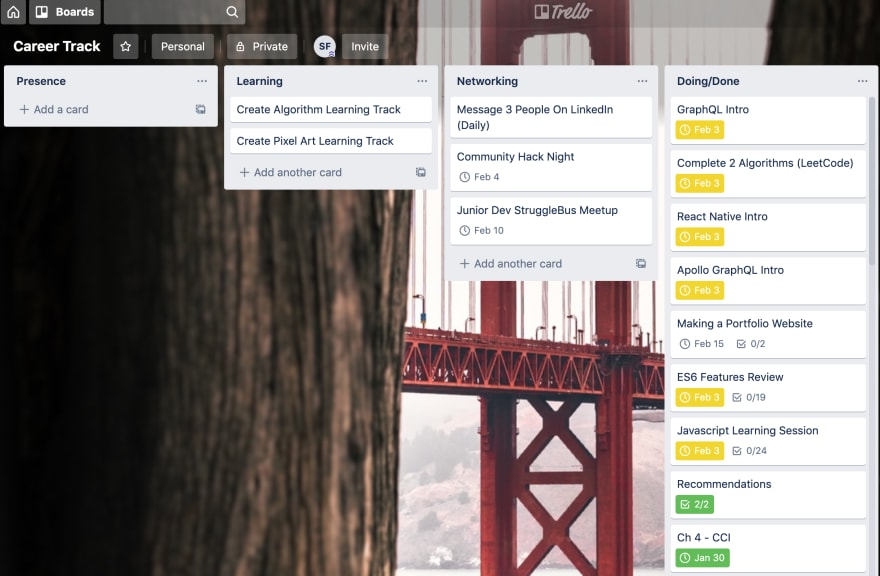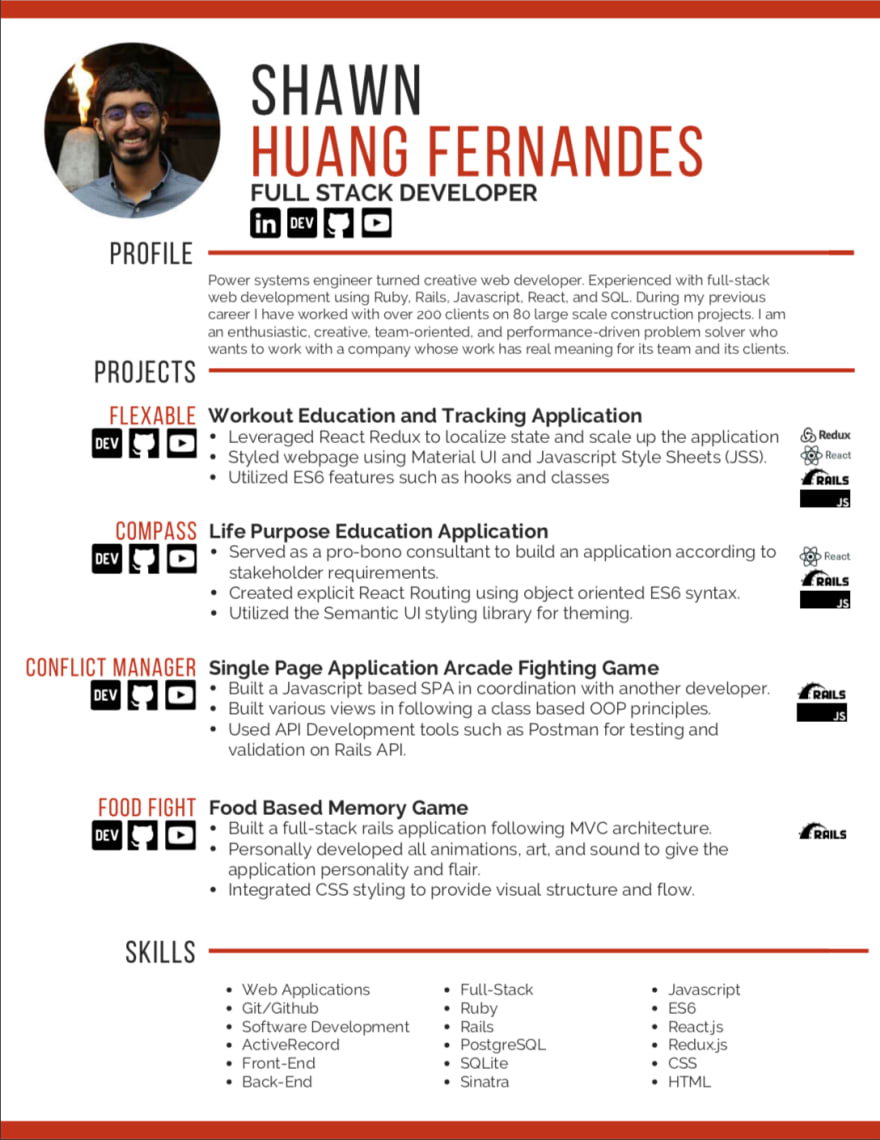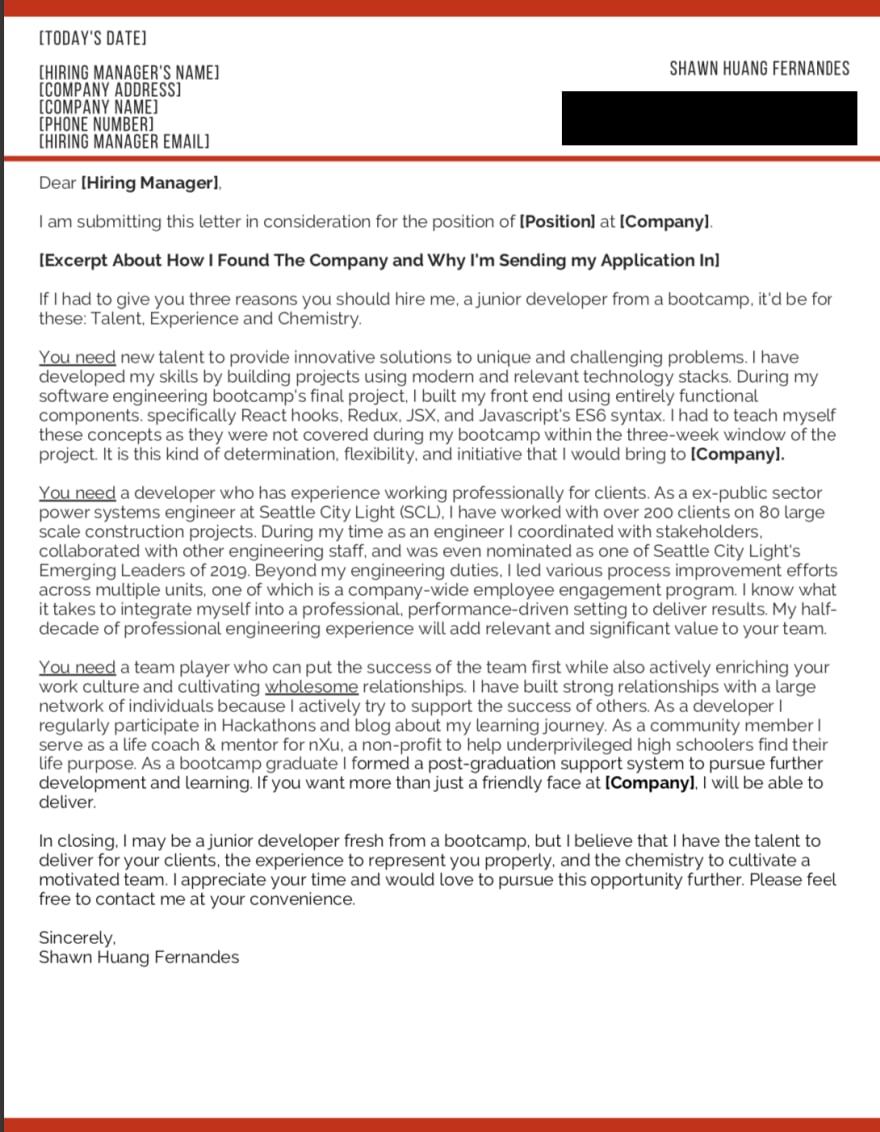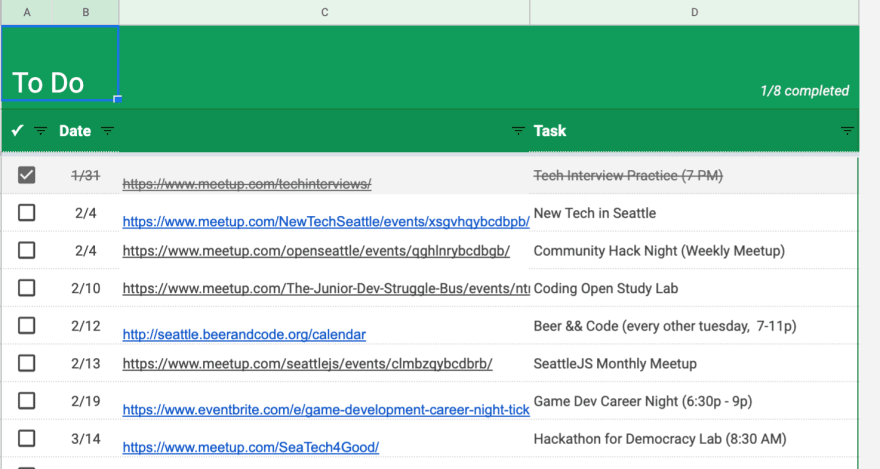Being freshly graduated from my bootcamp at Flatiron gives me mixed feelings:
1) Amazing! I now have autonomy to learn and do as I please!
2) Wait... nobody is going to tell me what to do? I need someone to tell me WHAT TO DO! (begins hyperventilating)
Getting Ready For Job Searching
So this week, I needed to prepare myself to for all the elements of the job search so I didn't get blindsided.
I decided to make a list of deliverables on Trello that would help me track what I needed to do, and set deadlines.
I separated them into 3 categories:
1) Presence
- Github
- This blog
- A Portfolio Website
- Resume
- Cover Letter
- Elevator Pitch
2) Learning
- Data structures
- Algorithms
- New Technologies (new tools)
- Continued Education (getting better at tools I already know)
3) Networking
- Meetups & other Activities
I will cover all the items bullet-by-bullet below
Cleaning Up My Github
After my bootcamp, I had to clean up approximately 300 repositories because of the programming labs that were forked and cloned to my Github as part of Flatiron's learn.co platform. Luckily, there was a Github Repo Cleaning Tool made by a previous Flatiron grad that made quick work of this for me.
I also revisited some of my old projects to clean up the code. This will require a little bit more TLC but I did go back through to:
- Add relevant comments
- Update READMEs
- Fork and Clone them to make sure that they actually worked
Things Left To Do With My Github
- I will need to start a new project or update existing projects to make sure my commit history does not abruptly stop because employers look at your Github history
Continuing My Blog
I also wanted to stay involved with the dev community after graduation by helping other pre-devs learn from my processes and struggles with the job searching process.
Things Left To Do With My Blog
- Keep Blogging (1 Blog Per Week)
Building My LinkedIn
LinkedIn is a good resource for finding jobs, but you need to spend some time polishing it and adding content. This is what my LinkedIn looks like. If you want to connect on LinkedIn because you saw this blog, please send me a message on LinkedIn, I'd love to know! Here were the main steps I followed to get it there:
- Take a decent picture with good lighting (I used a DSLR)
- Meaningful bio with relevant links to your other outlets
- Work Experience
- Education
- Volunteer Experience
- Skills/Endorsements (Remember to take skill quizzes)
- Recommendations (Shoutouts to the people who really helped you!)
- Endorse the skills of people you worked with!
- Set up your job interest tags
- Accomplishments (Projects, Awards etc.)
Things Left To Do With My LinkedIn
- Finish sending out recommendations to people
- Look for companies that are doing work that resonates with me
Portfolio Website
This is a website that you can point someone to that is will route potential employers or interested parties to information about you. A lot of people think that as a web developer, you NEED to make your own website, however, I was recommended that as a junior developer, to consider using a templating tool to start me off. I will be using a Gatsby template to build a starter React static website that will serve as my portfolio.
There are other tools available like: Squarespace, Wordpress, Wix, Weebly etc. I like Gatsby because the documentation on it was really user friendly and I will be customizing it later down the road.
Things Left To Do With My Portfolio Website
- Still need to finish building it. I will be writing a short blog post on this for next week!
My Resume
I started my resume work by creating a document that held all the information about my work history and projects. It looked something like this:
I then used a tool called Canva to style the resume, and took my developer specific information and created a new version of the original resume, which looked like this:
Things Left To Do With My Resume
- Pass the resume through some sort of keyword-filtering tool (this makes me vomit, but people have recommended I do this)
- Add my contact info (I just realized this when reviewing my blog post)
Cover Letter
Some people create Cover Letters from scratch for every employer. I wanted to have distinct cover letters as well, but I wanted to get the information on a page that I could massage and tailor for each company I applied to. I decided to use Canva to maintain the same theme as my resume. Here's what my initial cover letter looked like.
I worked on my cover letter with one of my close friends from my bootcamp, and it nearly took a full 5 hours to write the page you see above. Cover writing is not easy, don't feel bad if it takes you a long time.
Things Left To Do With My Cover Letter
- Get cover letter reviewed by 3 developers + my career coach
30 Second Elevator Pitch
Creating an elevator pitch should help you at networking events, and it also really helps you figure out what makes you stand out from others. I had written my resume and by cover letter before this, so I didn't have too much trouble writing a 30 second statement. Here's what I have so far:
I used to be an engineer with a pension, and now I’m a programmer with a purpose. I recently graduated from Flatiron School, and I’m looking to use my developer super powers in React and Rails to do engaging work on a team that creates imaginative and meaningful experiences for its users. I am currently working on a mobile game using React Native that encourages individuals to think about what their purpose in life is. Working for a company that helps people in the same way would be a dream.
Things Left To Do With My Elevator Pitch
- Get this reviewed by 3 developers + my career coach
Learning Data Structures
My software engineering bootcamp focused on web development, and we learned some data structures like Hashes and Arrays through building applications. I was lucky to have some awesome coaches and peers who filled the rest of us in that learning how to build the various types of data structures is a must for a significant portion of interviews. That being said, a common book that people were reading was Cracking The Coding Interview by Gaayle Laakman McDowell. This book does a good job of explaining the innards of different types of problems including data structures (although it does it in Java). Two of my classmates and I have made an effort to cover 2 chapters every other day.
Algorithms
Because it is very common in interviews to do algorithms, I have made an effort to begin doing algorithm questions on both HackerRank and LeetCode. This is really helpful to just stay sharp on my basic programming skills with Javascript and Ruby, but it also lets me try to use my knowledge in Data Structures to solve problems. My goal is to do at least 10 algorithms weekly. I will be whiteboarding them with my classmates, so we can practice talking out loud when we solve the problems. I will see by the end of next week if that is too few or too many!
Learning New Technologies
This is by far the most fun part about being a bootcamp graduate. I have looked at some jobs on LinkedIn and GlassDoor and compared them with my current interests. Right now two technologies stand out that I really would like to learn. React Native (for mobile development) and GraphQL (data query and manipulation language). I plan on working on a new "test" project to learn the ropes of these two new tools, which will also help keep my Github current so employers know I'm not slacking!
Continued Education (AKA Practicing ReactJS)
I would like to build some very simple applications using React and Rails to keep my React/Redux/Rails/CSS skills from getting dull. I might be working on a very simple project to practice them, based on the available bandwidth I have from my career stuff, algorithms, learning, and networking. More on this next week!
Meetups And Other Activities
It is a widely agreed-upon fact that relationships get jobs. That being said it's really important that I stay active in the developer community and try to meet new people with a genuine intention of creating personal connections. I've got a plan! I created a spreadsheet with some of my Flatiron classmates, where we make a weekly compilation of upcoming networking events, here's what it looks like:
It will be fun to go with people I know (and hopefully take part of the anxiety away) but it also makes it easy to pick one or two events to go to each week, which is my plan.
Overall
This past week has been surprisingly busy for having completed school. I anticipate it will become even busier and more stressful when I start doing interviews, but I'll be happy to share my findings, progress and hopefully share the good news when I land an awesome job!
Thanks for reading, and stay tuned!
Shawn
















Top comments (0)